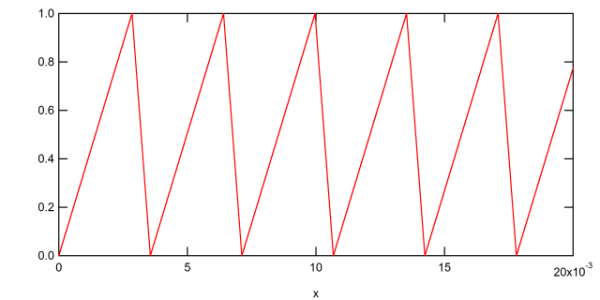
Triangle function (derived from Sawtooth)
function tri(x, [v]) variable x, v if (ParamIsDefault(v)) v = 0.5 endif if (v>=1) return sawtooth(x) elseif (v<=0) return 1 - sawtooth(x) else return sawtooth(x) * ((v - sawtooth(x))>=0) / v + sawtooth(-x) * ((1-v) - (sawtooth(-x)) >=0) / (1-v) endif end
Attached is a graph with v=0.8


Forum

Support

Gallery
Igor Pro 10
Learn More
Igor XOP Toolkit
Learn More
Igor NIDAQ Tools MX
Learn More

January 14, 2011 at 07:02 am - Permalink
John Bechhoefer
Department of Physics
Simon Fraser University
Burnaby, BC, Canada
May 25, 2012 at 09:28 am - Permalink
... just add amplitude and period to taste :)
A.G.
May 25, 2012 at 10:53 am - Permalink